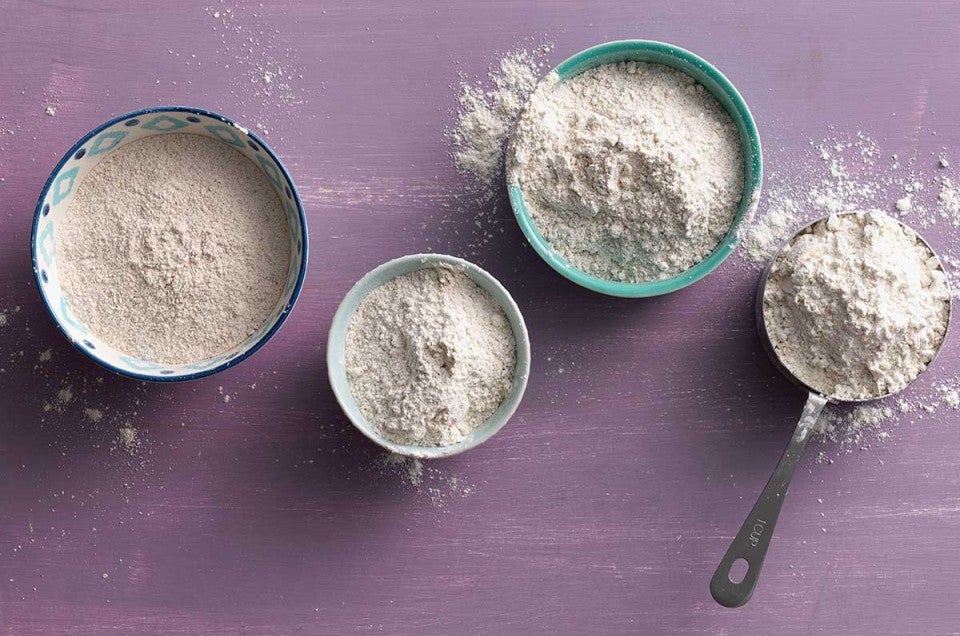


 Over the next few weeks, we're celebrating rye flour and all the baking possibilities it offers, from complex flavor to surprising versatility. Join us each week as we explore just why you should be baking with rye.
Over the next few weeks, we're celebrating rye flour and all the baking possibilities it offers, from complex flavor to surprising versatility. Join us each week as we explore just why you should be baking with rye.
If you’re looking to add another dimension to your baking, look no further than rye flour. Milled from rye kernels (also called rye berries), the flour has a fresh, nutty flavor that distinguishes it from the wheat flour you likely use to bake. With all sorts of flavor and texture possibilities, it’s totally swoon-worthy.
But! The wonderful world of rye can quickly get confusing. Scan a supermarket shelf, and you might become overwhelmed by the different names and colors printed on flour bags.
White vs. dark rye? How does medium rye relate? And what in the world is pumpernickel flour?
Not to fear. We’re here to break things down and provide a guide to navigating rye flour. With this rye primer, you'll learn the difference between various flours and choose the one that best suits your baking needs.
First, it’s important to understand just how rye flours are categorized. Similar to wheat flour, different rye flours are determined by how much of the rye kernel — i.e., the endosperm, bran, and germ — is present. The more rye kernel there is, the darker the flour. This also means a more intense rye flavor and often a denser texture in your final baked goods.
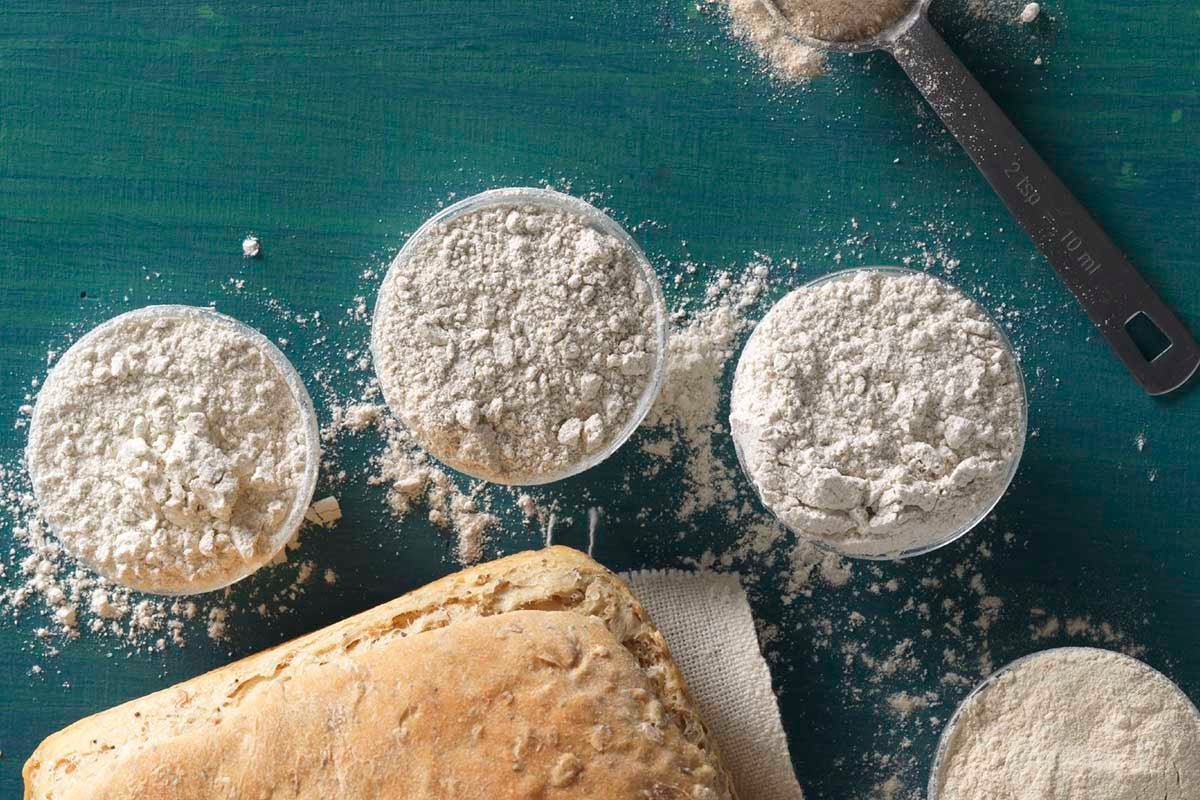
For reference, here’s a quick breakdown of the three parts that make up a rye kernel (and all other whole grains):
White rye flour, as the name implies, is the lightest version of rye flour. It’s also sometimes referred to as “light rye.” In white rye flour, the bran and germ are completely removed, and the flour contains only the starchy endosperm of the rye kernel. Without that bran and germ to weigh things down, this flour can create light, airy loaves that are miles away from the dense, heavy rye breads you might be familiar with. This flour has just a subtle rye flavor, adding more of a pleasant hint of complexity than overwhelming rye taste.
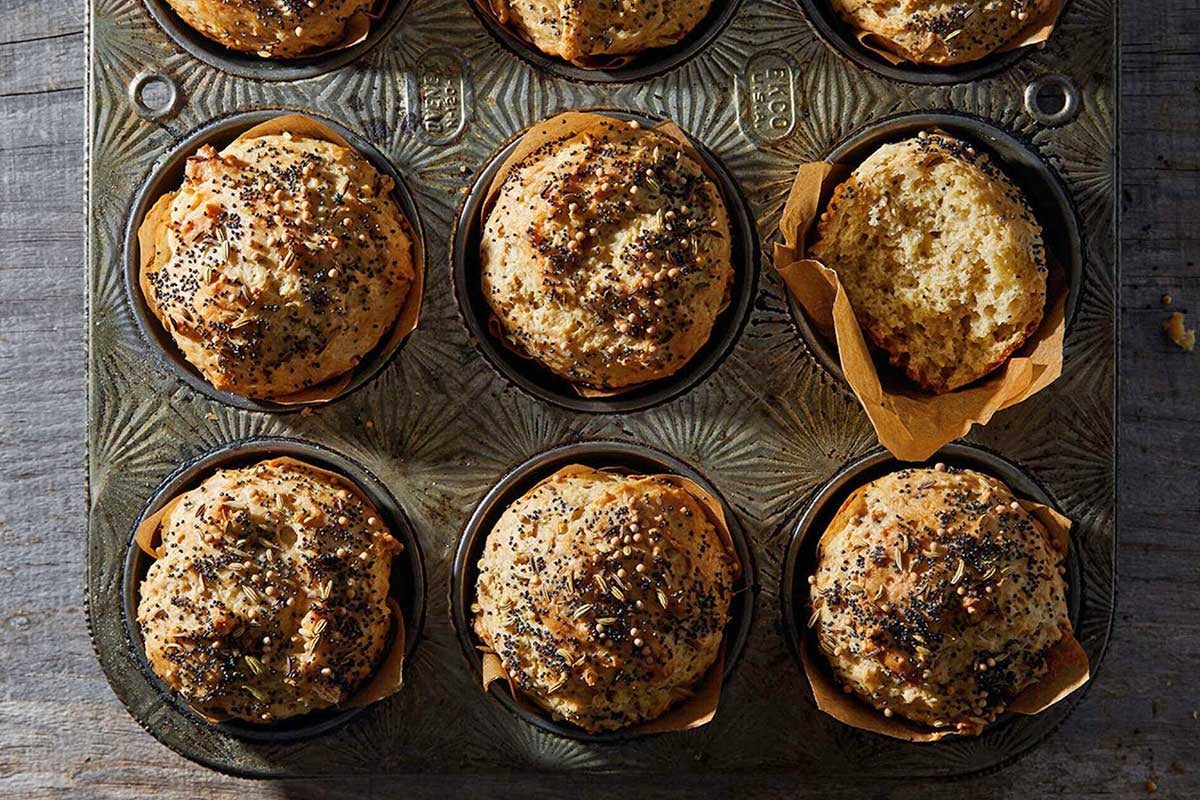
Medium rye flour contains more of the bran than white rye, leading to a darker color and more robust rye flavor. At the same time, it’s not weighed down by the germ or too much bran like darker rye flours, so it can still be used in delicate doughs or tender tarts. In a way, medium rye flour offers the best of all worlds in baking — it has the lighter texture and versatility of white rye, as well as the hearty, complex flavor of whole grain rye flours.
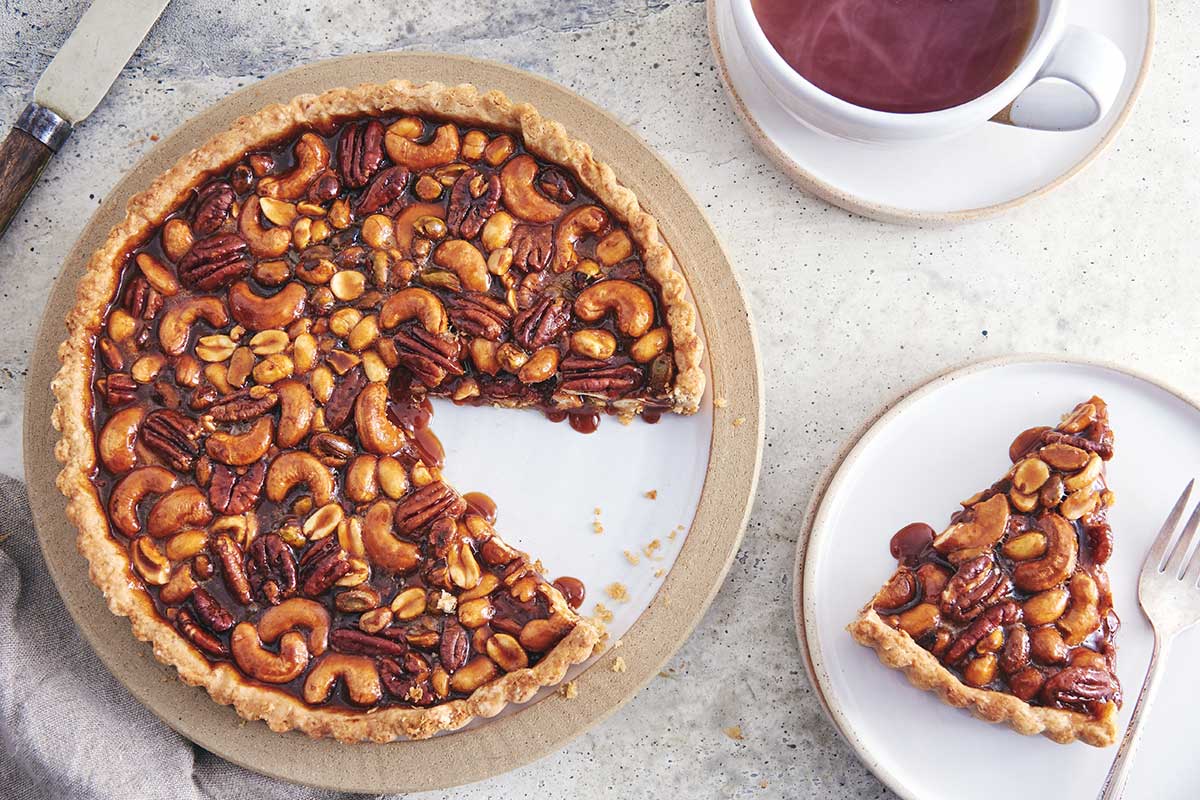
Here’s where things can get confusing. Dark rye flour can differ among producers. Usually, it’s milled from the entire rye kernel — all of the bran, germ, and endosperm — making it a whole grain rye flour. However, some dark rye flours have parts of the bran sifted out or contain little of the endosperm. Without a standard classification, different options can vary, making it difficult to pinpoint exactly what you’re getting. So if you’re looking for a whole grain rye flour, count on ...
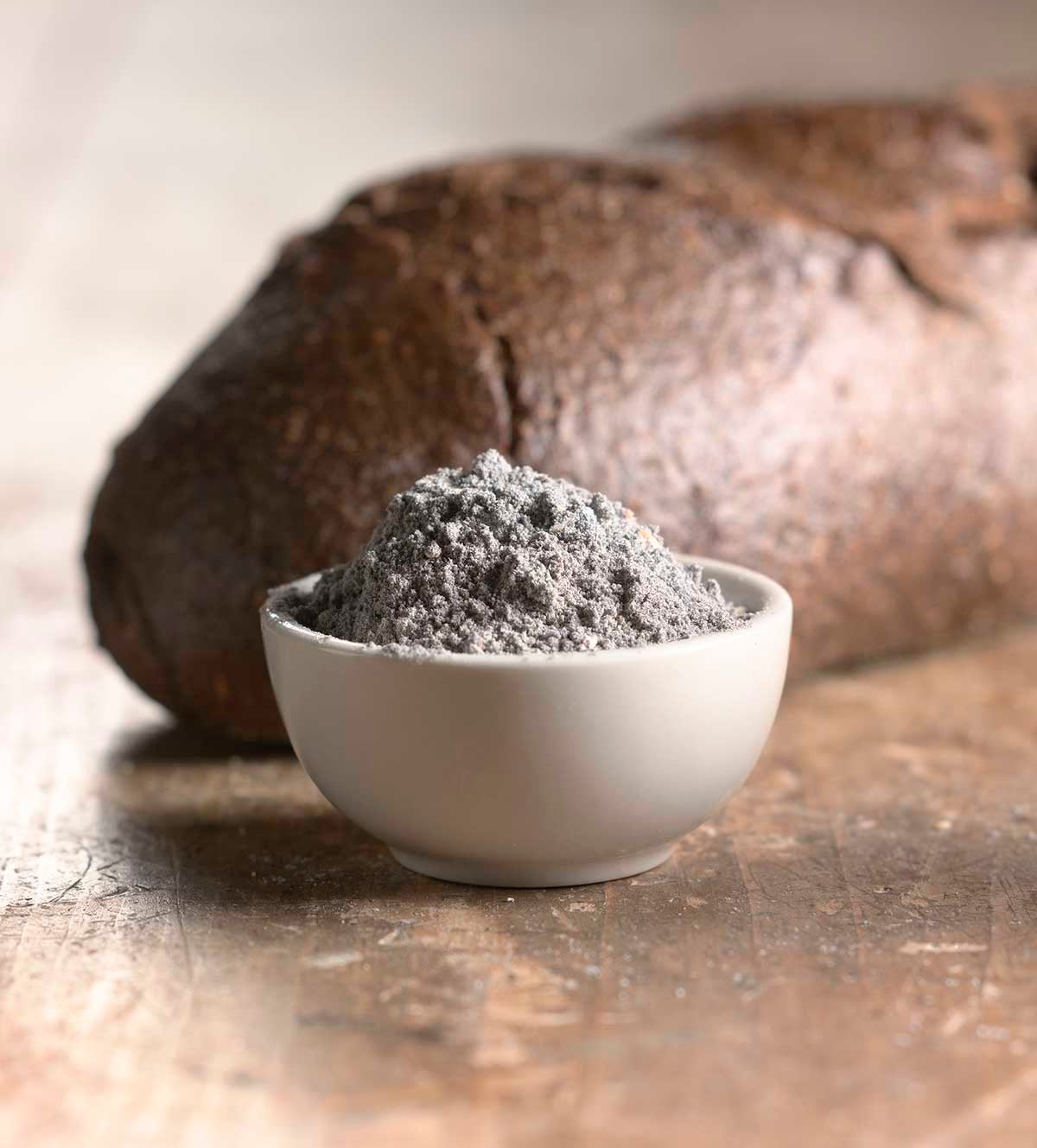
Pumpernickel flour contains all of the bran, germ, and endosperm of the rye kernel. As a result, it has an even darker color than medium rye and can alternately be known as “rye meal” or “whole rye flour.” With all the mineral-rich goodness of the whole rye berry, pumpernickel flour has an assertive, complex flavor that really shines through. This is also the kind of rye flour you’ll usually find in sourdough recipes, as it’s best for fermentation. Because the whole kernel is present in this whole grain rye, pumpernickel flour is coarser than white or medium rye and makes heavier baked goods.
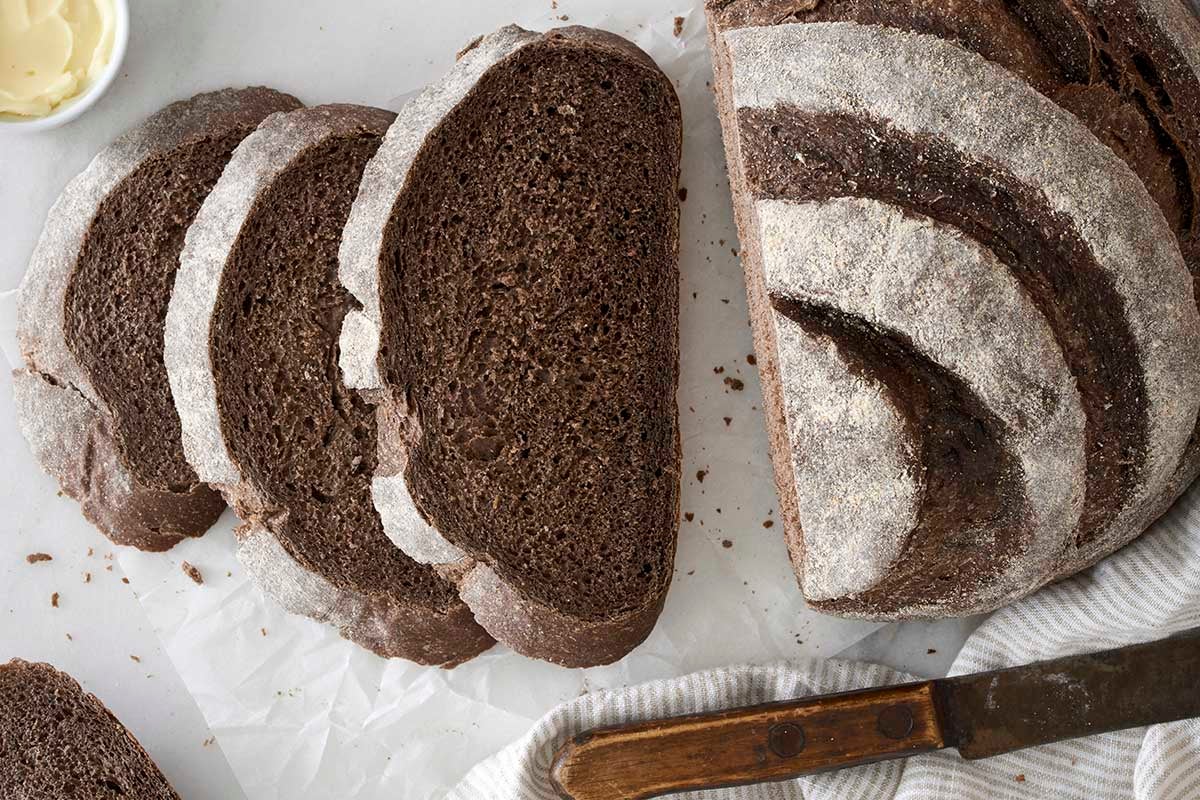
Some recipes are written for specific rye flours, like Spiced Rye Ginger Cookies, which use medium rye for the perfect balance of assertive flavor and chewy texture.
Other times, it’s all up to you! As the baker, you can use the rye flour that provides what you’re looking for. Want strong, powerful rye flavor? Pick pumpernickel. Maybe you’re seeking a lighter texture? White rye is the way to go. And if you want both — complex rye flavor without a dense, heavy baked good — our Organic Medium Rye is your best bet.
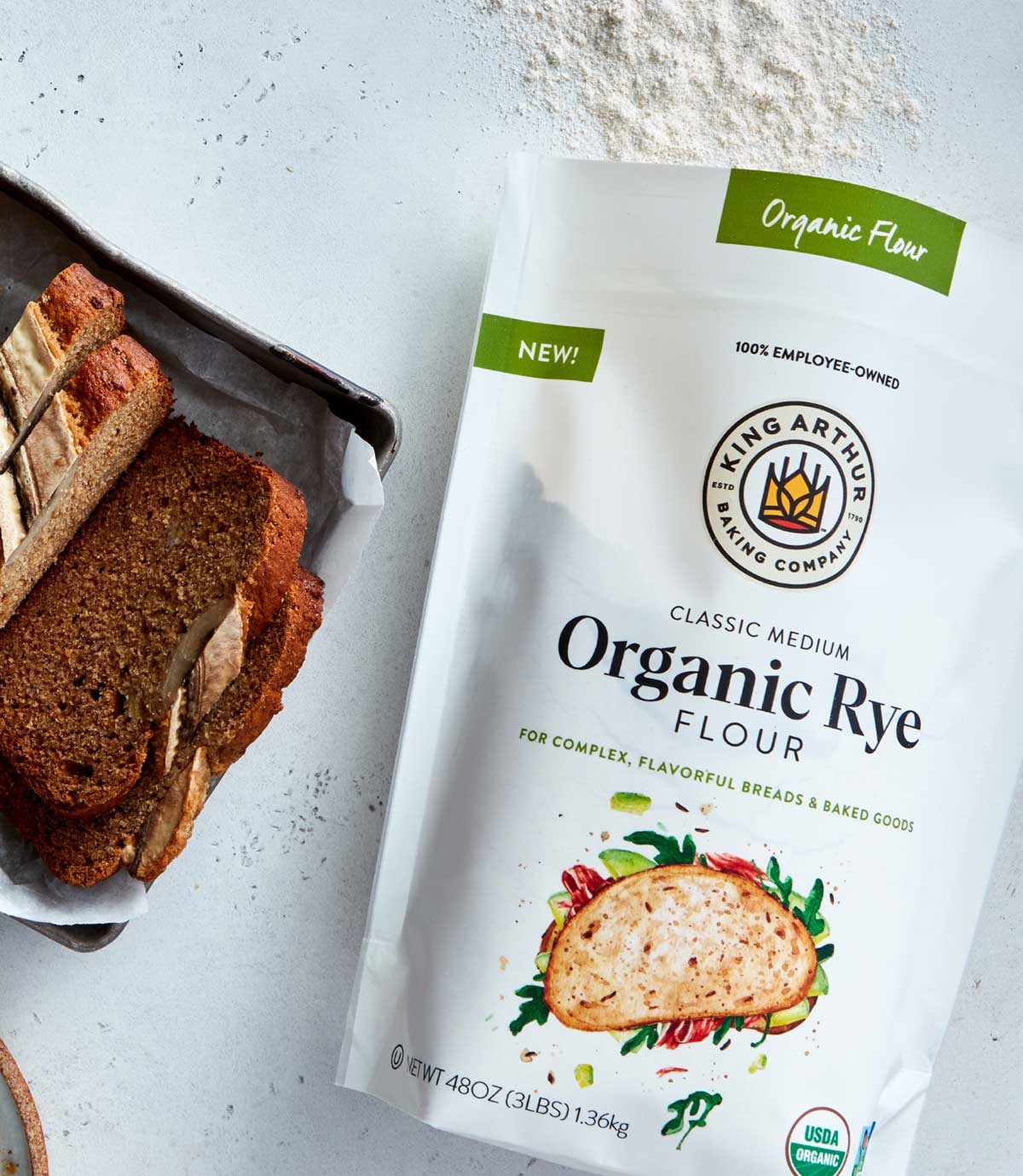
As a result, if you only want to keep one bag of rye flour in your kitchen (I get it, pantries are only so big), we recommend sticking with our medium rye. Because it's so versatile, it can be used in almost any recipe calling for rye flour, from tender tarts to chewy cookies, and just about everything in between.
Explore some of our favorite recipes for showcasing the flavors and textures of rye, and keep an eye out for more blog posts coming this month on why you should be baking with rye!


October 7, 2020 at 12:36pm
In reply to My daughter and… by Timaree (not verified)
Hi there, Timaree! Adding light rye flour to recipes would be the same as using the medium rye flour that we've featured here. Light rye, or white rye, has the bran and germ removed which makes for a lighter colored flour and imparts a lighter texture to baked goods. We highly recommend that you check in with your daughter and their doctor first to ensure that rye is a suitable choice for them and their sensitivities, rye flour is often processed on the same equipment as wheat flour so there is a chance for cross-contact.
October 4, 2020 at 4:20pm
At the beginning of the COVID19 quarantine I made sourdough bread and read the history of the 900 day siege of Leningrad. They hungered for bread. I want to know what bread they would have eaten were it available. And the recipe for it.
They made bread with 10% cellulose added, among other flour substitute ingredients. I seek the recipe for their traditional bread.
October 7, 2020 at 12:31pm
In reply to At the beginning of the… by Charles Hegarty (not verified)
What an interesting adventure, Charles! While we don't have any specifics on the kind of bread you've described here, we might suggest looking into German Kommissbrot recipes. Kommissbrot is a dark German bread with a long shelflife and was traditionally used as military provisions. You might also check in with your nearest university's history department for some help finding resources to look into. Best of luck!
October 11, 2020 at 6:23pm
In reply to At the beginning of the… by Charles Hegarty (not verified)
Charles,
My baker told me years ago that during the war or hard times, it was normal to use sawed wood dust (cellulose) to extend the volume of bread dough. Now we know that was healthy by adding fiber to their limited diet. I have never tried it and probably would not recommend it in this day and age. It is good to know history and know how people could stretch the budget or availability of ingredients.
October 4, 2020 at 11:30am
I’m very pleased to be a part of this community... you have some amazingly interesting articles. I enjoyed this instructive article on rye flour - I recently saw a recipe for pizza which calls for some rye flour as well as 00 flour and didn’t know what rye flour was ... now I know. I’m in Canada and can’t get King Arthur flour here, which is unfortunate but I’ll stock up when the Canada-US border opens and I can get back down there.
October 12, 2020 at 7:56pm
In reply to I’m very pleased to be a… by Marlyn Macdonald (not verified)
I live about 90 miles south of Lake Superior, in the U.S. state of Wisconsin and I cannot buy certain King Arthur items anywhere. So, I order on line. I don`t know if international laws prohibit that, but give it a try. Good luck!
October 3, 2020 at 1:29pm
Greetings Rossi,
Thank you for publishing this blog article! Until now, I haven't found concise explanations of the various types of rye, possibly due to a lack of standardized terminology in the industry. I printed your blog article and will keep it in my folders for future reference. Might you be able to extend this article into a future article about considerations for baking with these various rye flours?
Again, a great article!!
October 6, 2020 at 10:42am
In reply to Greetings Rossi, Thank you… by Mark M. (not verified)
So glad this was helpful to you! We'll definitely keep in mind your suggestion for a follow up article on the specifics of baking with these flours. Happy baking!
October 2, 2020 at 2:49pm
Can I substitute Rye for Whole Wheat in bread for a different taste ???
October 6, 2020 at 10:44am
In reply to Can I substitute Rye for… by Kenneth Hanlon (not verified)
Hi Kenneth, rye flour can be tricky to substitute in yeast bread recipes because of the unique properties of wheat flour. We recommend baking bread recipes that specifically call for rye. If you want to play around with subbing for whole wheat, we suggest substituting rye flour for half the whole wheat in non-yeast recipes.
Pagination